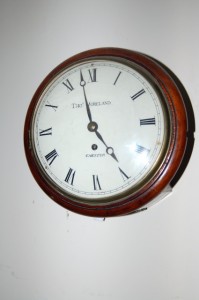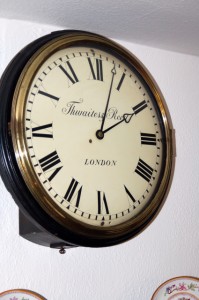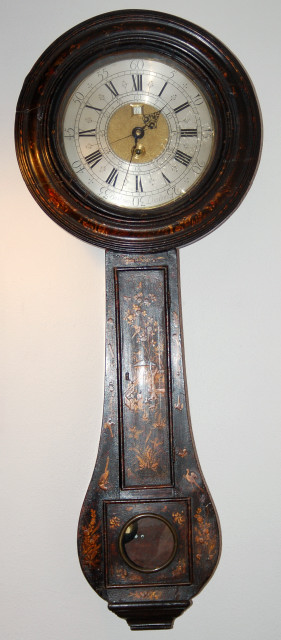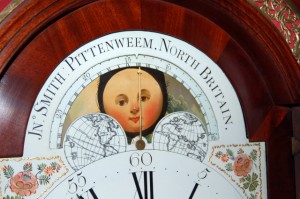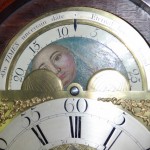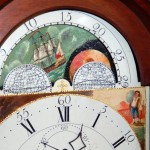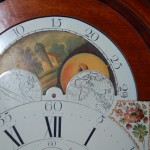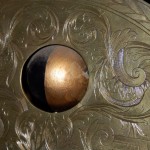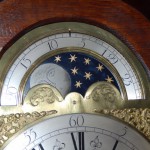 A typical verge 17th century lantern clock with alarm feature to dial centre. These clocks are hung from a hook on the wall and they have one weight which drives both the striking side and going side of mechanism. As a result these clocks go for 30 hours or less on a full wind.
A typical verge 17th century lantern clock with alarm feature to dial centre. These clocks are hung from a hook on the wall and they have one weight which drives both the striking side and going side of mechanism. As a result these clocks go for 30 hours or less on a full wind.
The development of Lantern Clocks
As this is such a broad subject for discussion, I can only give a few important pointers in the development of English Lantern Clocks. I will try and answer any questions you may have through my main website. The earliest practical timekeepers in homes in this country were the lantern clocks. They deserve discussion and I will do my best in a short piece to give a useful insight into their manufacture/ design and dates.
What is in the name, Lantern Clock?
The name Lantern Clocks always causes much debate. Some people suggest the word derives from a corruption of the word Latten, which used to describe copper alloys, much like brass in the Middle Ages. It is also suggested the name comes from the fact that the clocks shape looks like a rectangular lantern from the period. In any event Lantern clocks, which are a type of weight driven clock hanging usually from the wall. They came into homes in this country from about C1600 remaining very popular until the 19 th century. You will see many copies of these types of antique clock sold today, many with spring driven movements.
Made of Brass
Lantern clocks were made almost exclusively of brass, you will only find a few posts within the movement and the clock hands made of iron. Sometimes even the antique clock hand will be cut from brass. These clocks generally have a single hand to tell the time. The movements are of a maximum of 30 hours duration. I have never seen a period ‘8-day’ example. These clocks strike the hours on a single bell and are wound from a rope system. Occasionally you will have an alarm feature to the centre of the dial. This alarm feature has sometimes been removed over the years.
(h3>Mechanisms of Lantern Clocks
The earliest mechanisms of these clocks have a balance wheel form of escapement. The development then continues onto the verge escapement and small bob pendulum. The problem with both these methods is accuracy for timekeeping is not great. It was the development of the long pendulum by Huygens in 1656 that further improved these clocks. Accuracy of about 15 minutes per day was expected with an early balance wheel escapement lantern clocks. Probably 5/10 minutes per day with the early verge escapements. Then onto and to under a minute or so with the anchor escapements and long pendulum.
The long pendulum – Christian Huygens
The invention of the long pendulum was both good and bad for the humble lantern clock. It is clear some of the earliest provincial grandfather clocks were lantern clocks in wood cases shaped very much like coffins. As development continued antique grandfather clock production slowly wiped out the need for lantern clocks. Few lantern clocks tend to be made during the 18th century.
Original lantern clocks dating back to the 17th century are rare and these are highly sought after and collectible. The Victorians unfortunately changed many of the movements of these 17th century lantern clocks. They put key wind late movements to them. I often see these clocks around the salerooms and it makes me sad. I have collected a number of genuine 17th century lantern clocks and many are pictured in the reknowned book by George White on English Lantern Clocks. If you wish to do a detailed study on these exceptional clocks I recommend reading this book. Alternatively visit our website for more information.













